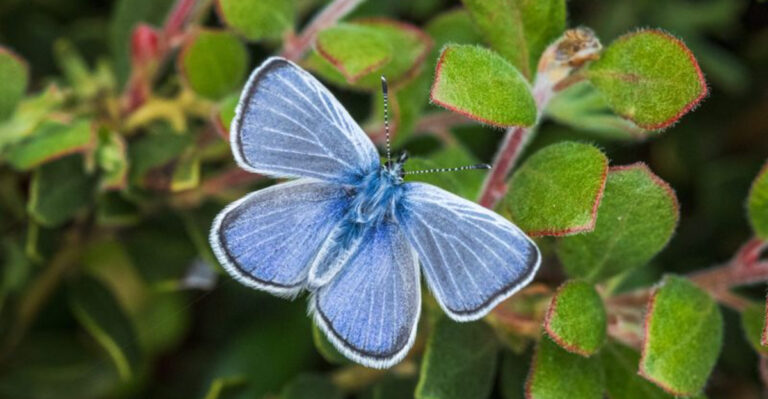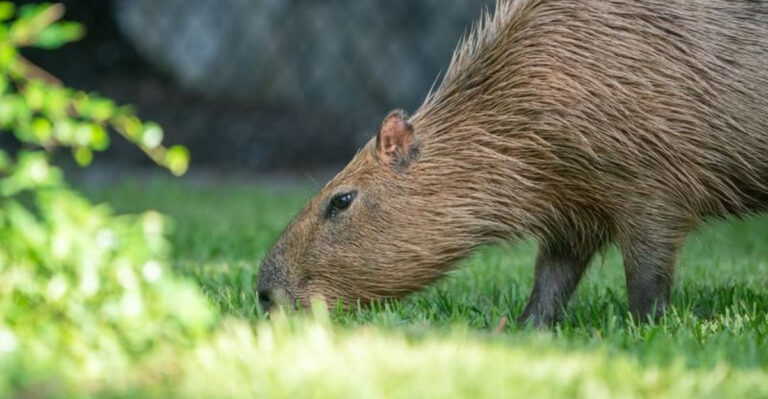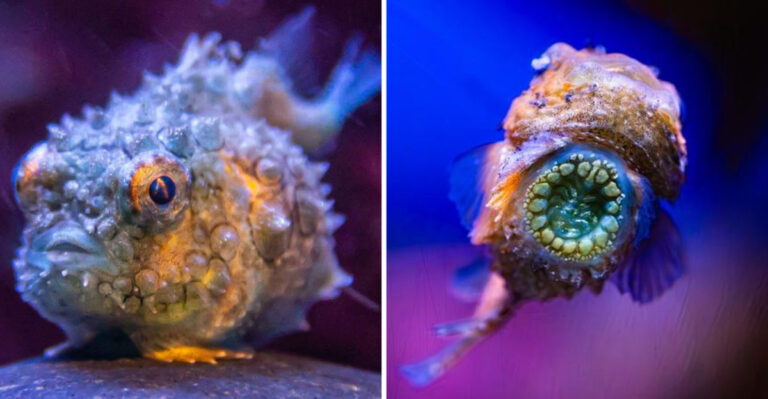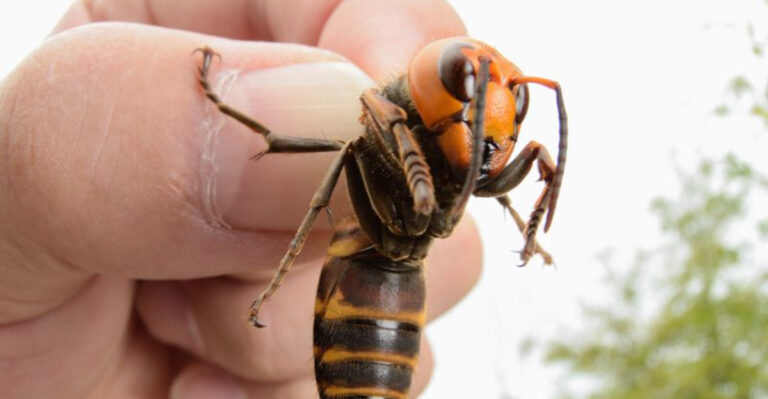14 Mysterious Creatures Lurking At The Bottom Of Mississippi River
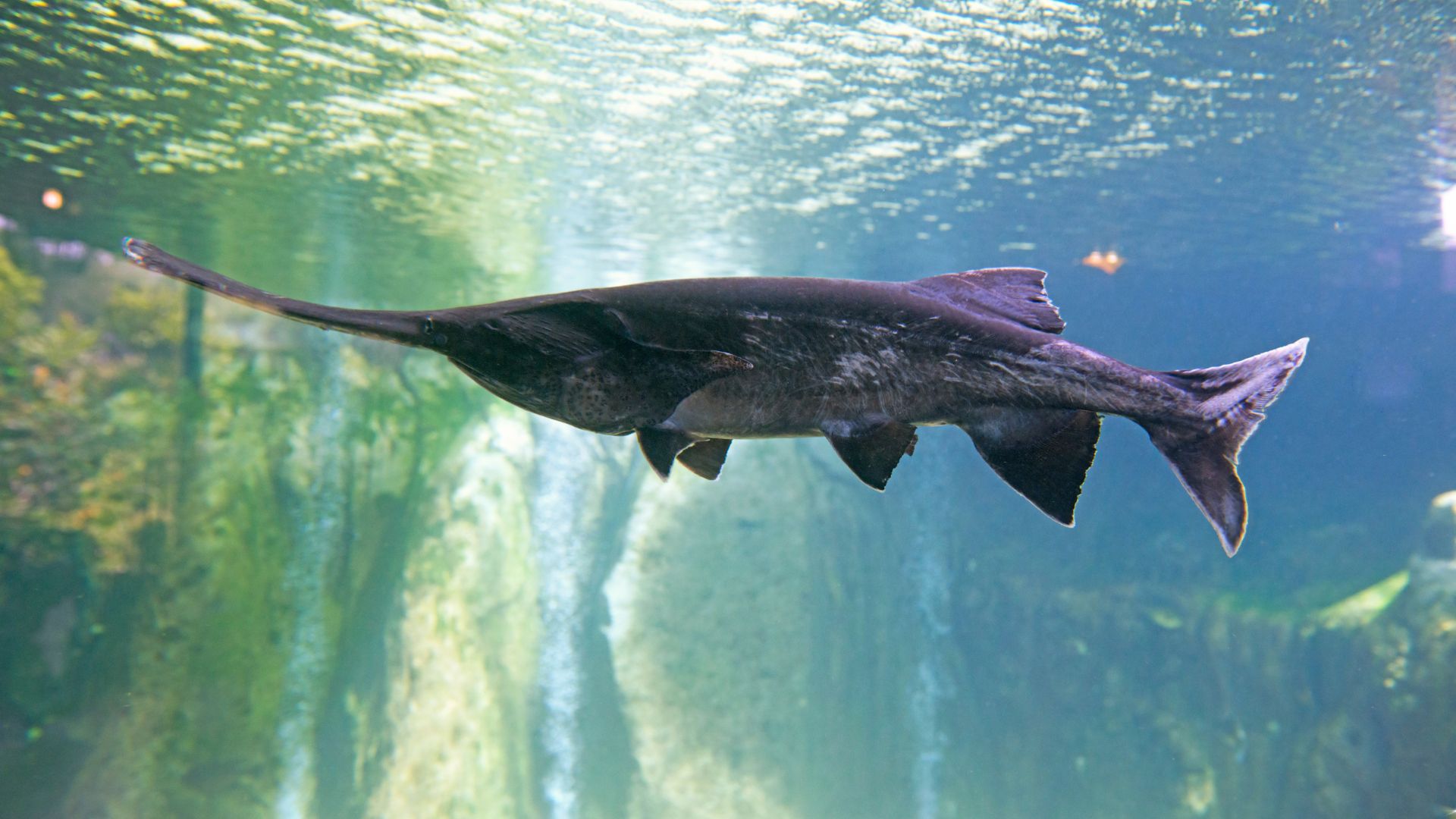
Beneath the murky waters of the mighty Mississippi River, a hidden world thrives—filled with mysterious and often strange creatures.
From rare fish to elusive amphibians, discover 14 fascinating species that call the riverbed their home.
1. Pallid Sturgeon
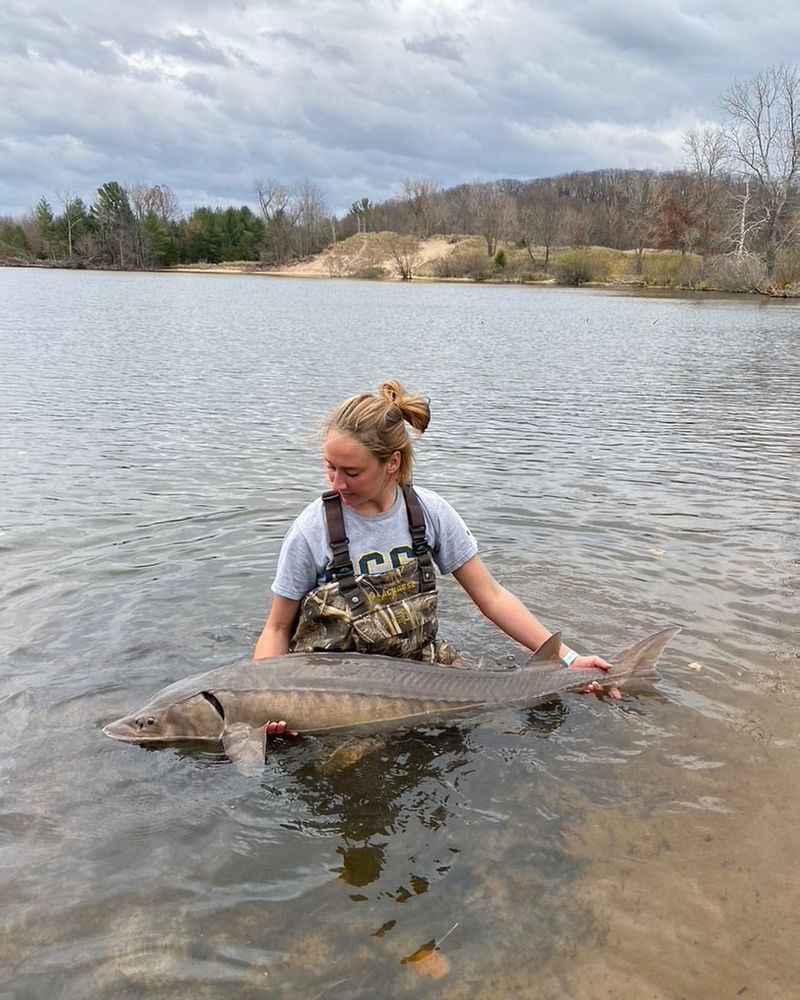
The Pallid Sturgeon is a living fossil of sorts, tracing its lineage back millions of years. With a body armored in bony plates and a distinctive flat snout, this prehistoric fish commands a mystique of its own.
Found lurking at the bottom of the Mississippi, it can grow up to six feet in length, making it one of the river’s largest residents.
Despite its daunting appearance, the Pallid Sturgeon is a gentle giant, feeding mainly on small fish and invertebrates.
Interestingly, the Pallid Sturgeon is not just a relic of the past but a vital component of the river’s ecosystem. Its presence indicates a healthy, diverse aquatic environment.
Conservation efforts are in place to protect this species, as it faces threats from habitat loss and water pollution.
Observing a Pallid Sturgeon in its natural setting is like peering into the pages of natural history—a rare and humbling experience. For those intrigued by evolutionary biology, this creature offers a tangible link to Earth’s distant past.
2. American Paddlefish
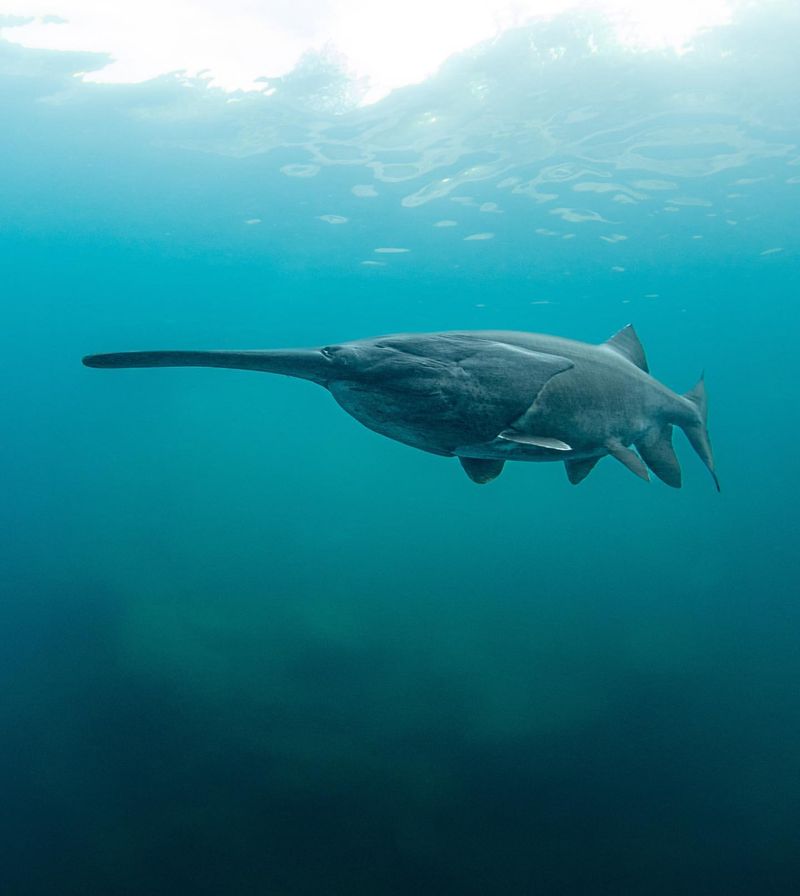
The American Paddlefish is an incredible creature, easily recognized by its long, paddle-like snout. This ancient fish feeds on plankton by filtering it from the water, using its unique snout to find its food.
With its streamlined, torpedo-shaped body, it moves smoothly through rivers, creating a beautiful sight. The paddlefish’s snout is more than just a distinctive feature; it contains electroreceptors that allow it to pick up on the tiny electrical signals made by plankton.
This ability is essential for its survival in the often cloudy waters of the Mississippi River. Reaching lengths of up to seven feet, the paddlefish is one of the largest freshwater fish in North America.
Unfortunately, despite their impressive size and long history, American Paddlefish populations are at risk due to overfishing and loss of habitat.
3. Alligator Gar
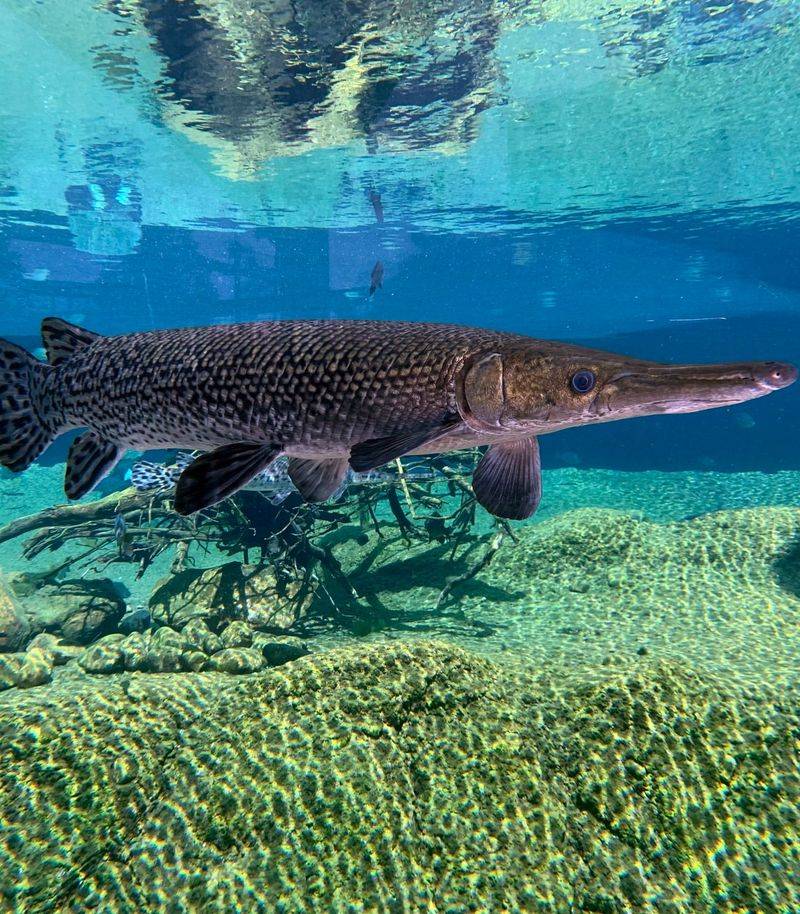
With its formidable appearance, the Alligator Gar is one of the river’s most iconic predators. With its sharp teeth and elongated body, it can easily be confused with an alligator at first sight.
This fish can reach lengths of over ten feet, making it a powerful presence in the Mississippi River’s ecosystem. Its ancient lineage is clear from its tough scales and streamlined shape.
As an ambush predator, it uses stealth and strength to catch its prey, which includes fish and small mammals, highlighting its position as a top predator in the river.
The Alligator Gar plays a crucial role in keeping the ecological balance of the Mississippi intact. Even though it has a scary reputation, this fish is an interesting subject for research.
Conservation efforts are underway to safeguard this unique species, which is threatened by habitat changes and overfishing.
4. Blue Catfish
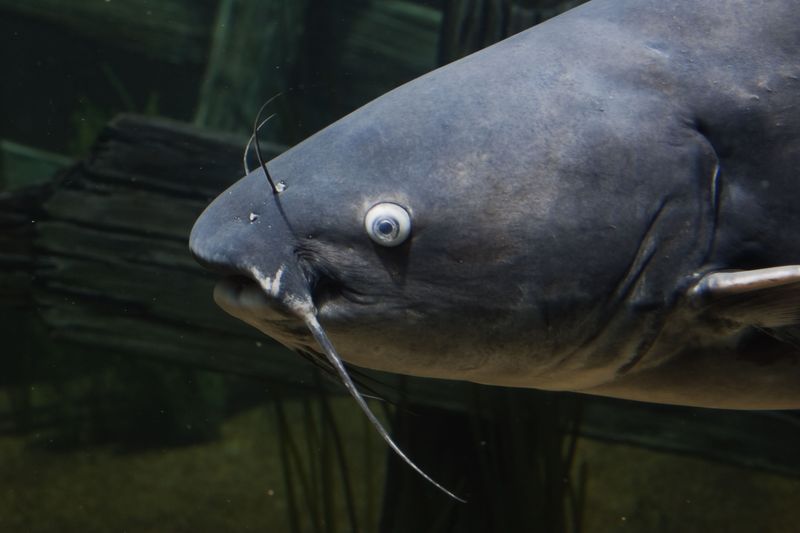
Among the giants of the river, the Blue Catfish stands out with its robust build and bluish hue. This fish is one of the largest species of catfish in North America, capable of reaching weights over a hundred pounds.
Its presence in the Mississippi underscores the river’s richness in aquatic life. Blue Catfish are opportunistic feeders, thriving on a diet of fish, insects, and crustaceans.
Their adaptability makes them successful in various environments within the river. This adaptability also poses challenges, as they can outcompete native species for resources.
Despite their competitive nature, Blue Catfish are an essential part of the river’s ecosystem. Anglers prize them for their size and fight, adding to the cultural fabric of the Mississippi region. Conservationists remain vigilant in monitoring their populations to maintain ecological balance.
5. Longnose Gar
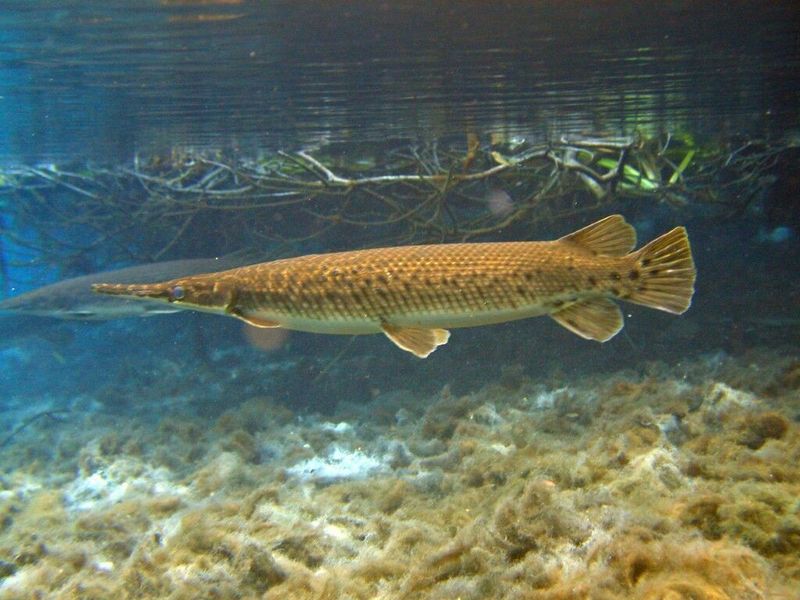
The Longnose Gar, with its elongated snout and sleek, torpedo-shaped body, is a captivating sight in the Mississippi River. This ancient fish, covered in armor-like scales, has a lineage that dates back millions of years, making it a living relic of the past.
Longnose Gar are ambush predators, using their pointed snouts to capture fish with precision. Their ability to survive in low-oxygen environments is remarkable, often surfacing to gulp air. This adaptation ensures their survival in the river’s varied habitats.
While not typically targeted by anglers, the Longnose Gar is an intriguing species to observe. Its presence contributes to the river’s biodiversity, playing a role in controlling fish populations. Conservation efforts help protect their habitats, ensuring they remain a part of the river’s ecosystem.
6. Channel Catfish
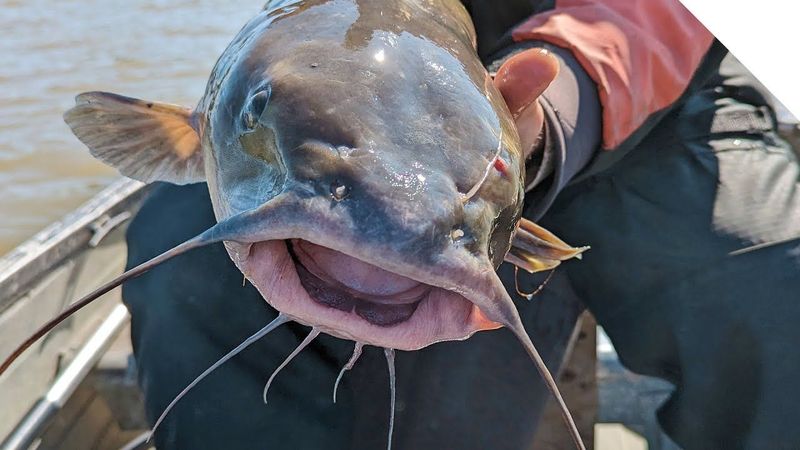
The Channel Catfish is a key species found in the Mississippi River, easily recognized by its unique forked tail and long, whisker-like barbels. It’s one of the most prevalent catfish in North America and does well in the river’s various environments.
These fish are omnivores, eating everything from other fish and insects to plants and decaying matter. Their ability to adapt helps them survive in both clean and polluted waters, making them an essential part of the river’s ecosystem.
Many anglers target Channel Catfish because they are delicious and highly sought after for meals. Conservation efforts are aimed at promoting sustainable fishing to keep their populations healthy for the future.
Watching a Channel Catfish in its natural habitat can provide a better understanding of the river’s ecological balance.
7. Bowfin
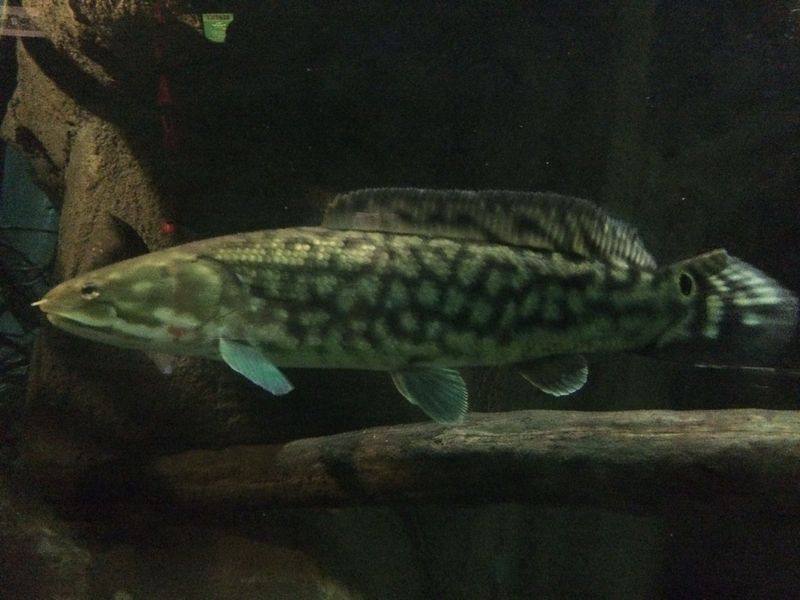
The Bowfin, often called the “living fossil,” is a fish with a primitive appearance, showcasing features that have changed little over millions of years. With a long dorsal fin and a rounded tail, the Bowfin is a unique sight in the Mississippi River.
This fish is known for its resilience, capable of surviving in low-oxygen environments by gulping air at the surface. Its diet includes fish, insects, and crustaceans, highlighting its role as a predator in the river’s ecosystem.
The Bowfin’s presence indicates a healthy aquatic environment. Despite their ancient lineage, Bowfins are often overlooked by anglers. However, their ecological significance cannot be understated. Conservation efforts aim to protect their habitats, ensuring they continue to thrive in the river.
8. Freshwater Drum
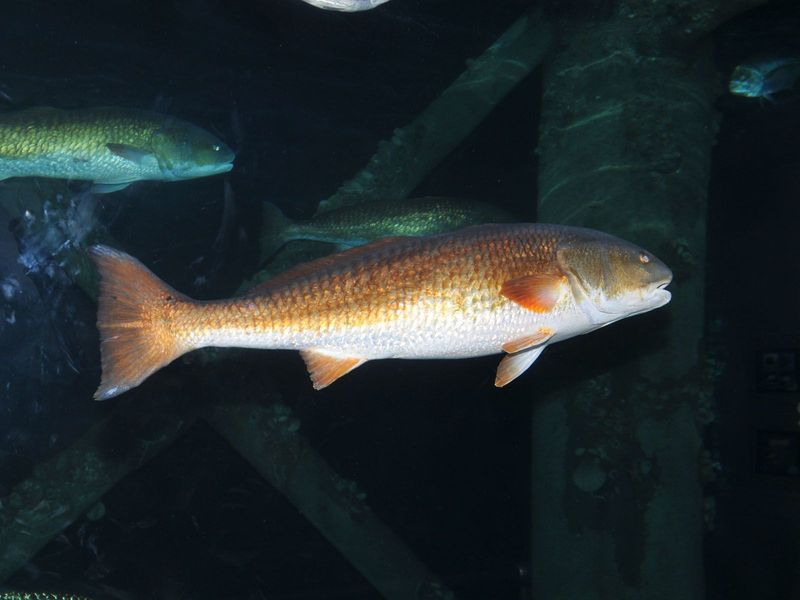
The Freshwater Drum, also known as the “sheepshead,” is a familiar resident of the Mississippi River, recognized by its silver-gray body and prominent humpback. This fish is unique for its ability to produce sounds using specialized muscles, earning its name.
Freshwater Drum are opportunistic feeders, consuming a diet of insects, mollusks, and small fish. Their adaptability allows them to thrive in various environments within the river. This versatility makes them a vital part of the river’s complex food web.
While not typically targeted by anglers, the Freshwater Drum is valued for its role in maintaining ecological balance. Conservation efforts help protect their habitats and ensure their populations remain healthy.
Observing a Freshwater Drum in its natural setting offers insights into the river’s biodiversity. It challenges us to appreciate the often-overlooked species that contribute to the ecosystem’s richness.
9. Common Carp
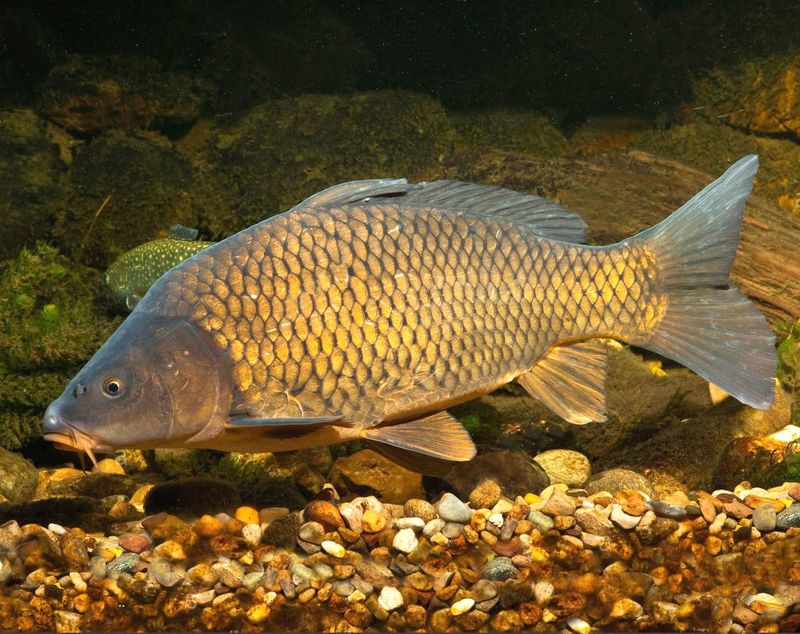
The Common Carp is a well-known resident of the Mississippi River, characterized by its large, robust body and golden scales. Originally introduced for sport, this fish has become a prevalent species in the river’s ecosystem.
Carp are omnivorous, consuming a wide range of foods including plants, insects, and detritus. Their feeding habits can significantly impact the river’s ecology, often leading to competition with native species for resources.
Despite this, carp are a resilient and adaptable species, thriving in various environments. Anglers often target carp for their size and strength, making them a popular catch.
However, their presence requires careful management to maintain ecological balance. Conservation efforts focus on monitoring populations and minimizing their impact on native species.
10. Southern Brook Lamprey
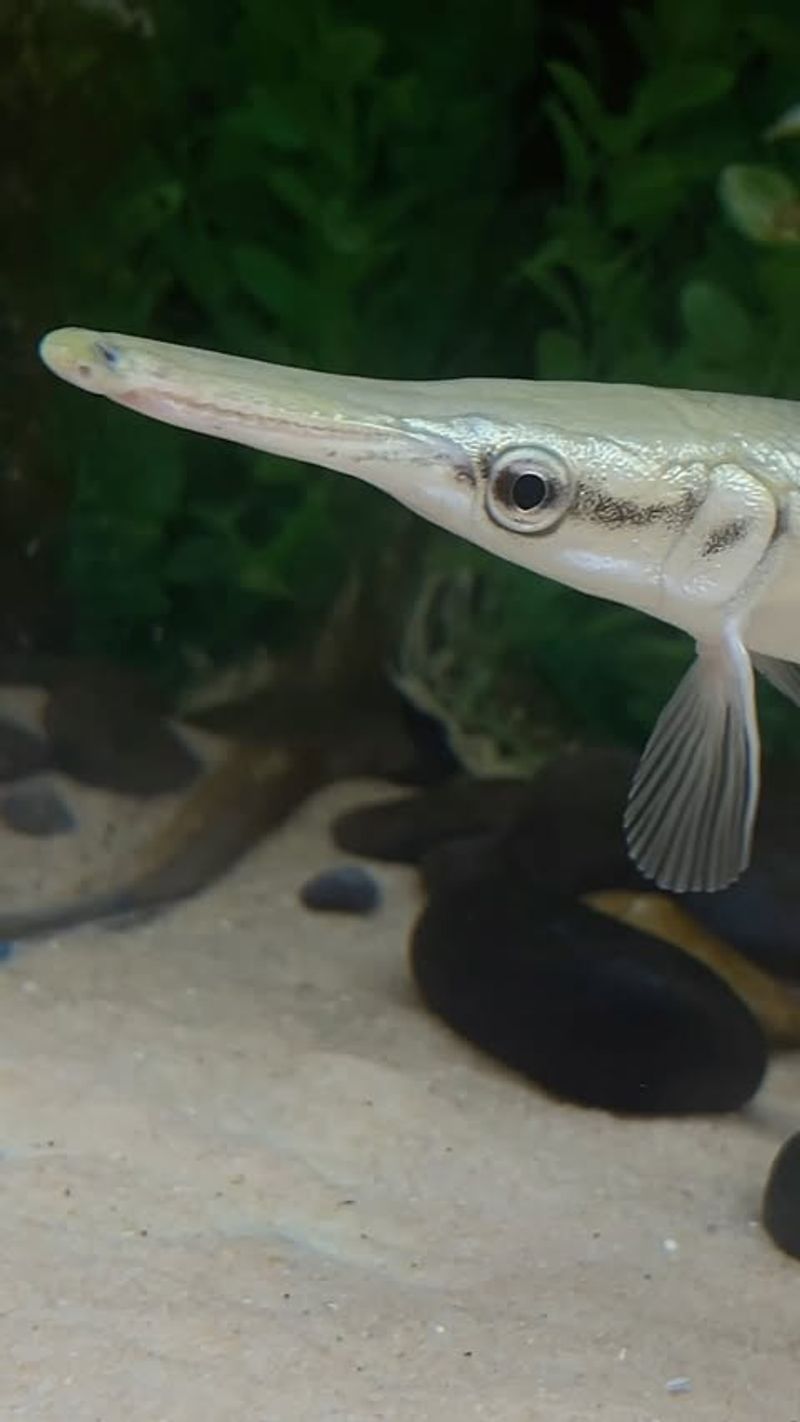
The Southern Brook Lamprey is a small, eel-like creature that inhabits the Mississippi River, known for its distinctive round mouth and lack of jaws.
This primitive fish has a unique life cycle, spending much of its life as a larva buried in the riverbed. Lampreys are filter feeders, consuming microorganisms and organic matter in the water. T
heir presence is an indicator of ecological health, highlighting the importance of water quality for sustaining diverse life forms.
The Southern Brook Lamprey plays a vital role in nutrient cycling within the river’s ecosystem. Despite their small size and unassuming appearance, lampreys are of great interest to biologists and conservationists.
Now, efforts are focused on preserving their habitats and ensuring their survival amidst environmental threats.
11. Round Goby
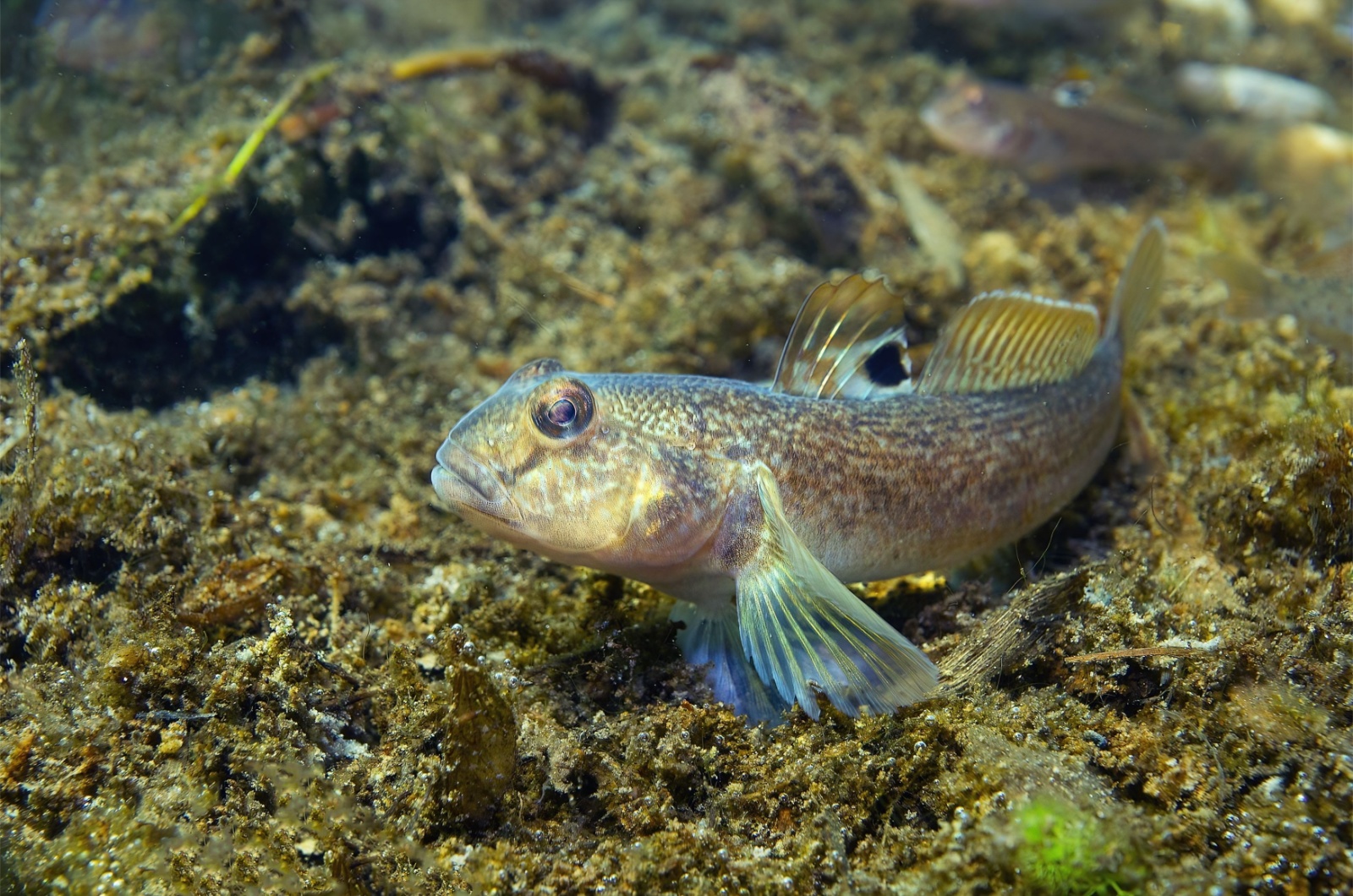
Credit: Shutterstock
The Round Goby is an invasive fish species that has established a strong presence in the Mississippi River, disrupting native ecosystems.
Originally from Eurasia’s Black and Caspian Seas, it was introduced to North America through ballast water discharged from ships. This small, bottom-dwelling fish thrives in rocky and sandy riverbeds, where it aggressively outcompetes native species for food and habitat.
Round Gobies have a voracious appetite, preying on small fish, insect larvae, and even the eggs of native species, leading to population declines in species such as logperch and darters. Their ability to survive in a wide range of conditions, including polluted waters, makes them a particularly resilient and damaging invader.
Additionally, their high reproduction rate allows them to spread quickly, making eradication nearly impossible. Scientists and conservationists continue to monitor their impact on the Mississippi River ecosystem, as they pose a significant threat to biodiversity and commercial fisheries.
12. Zebra Mussels
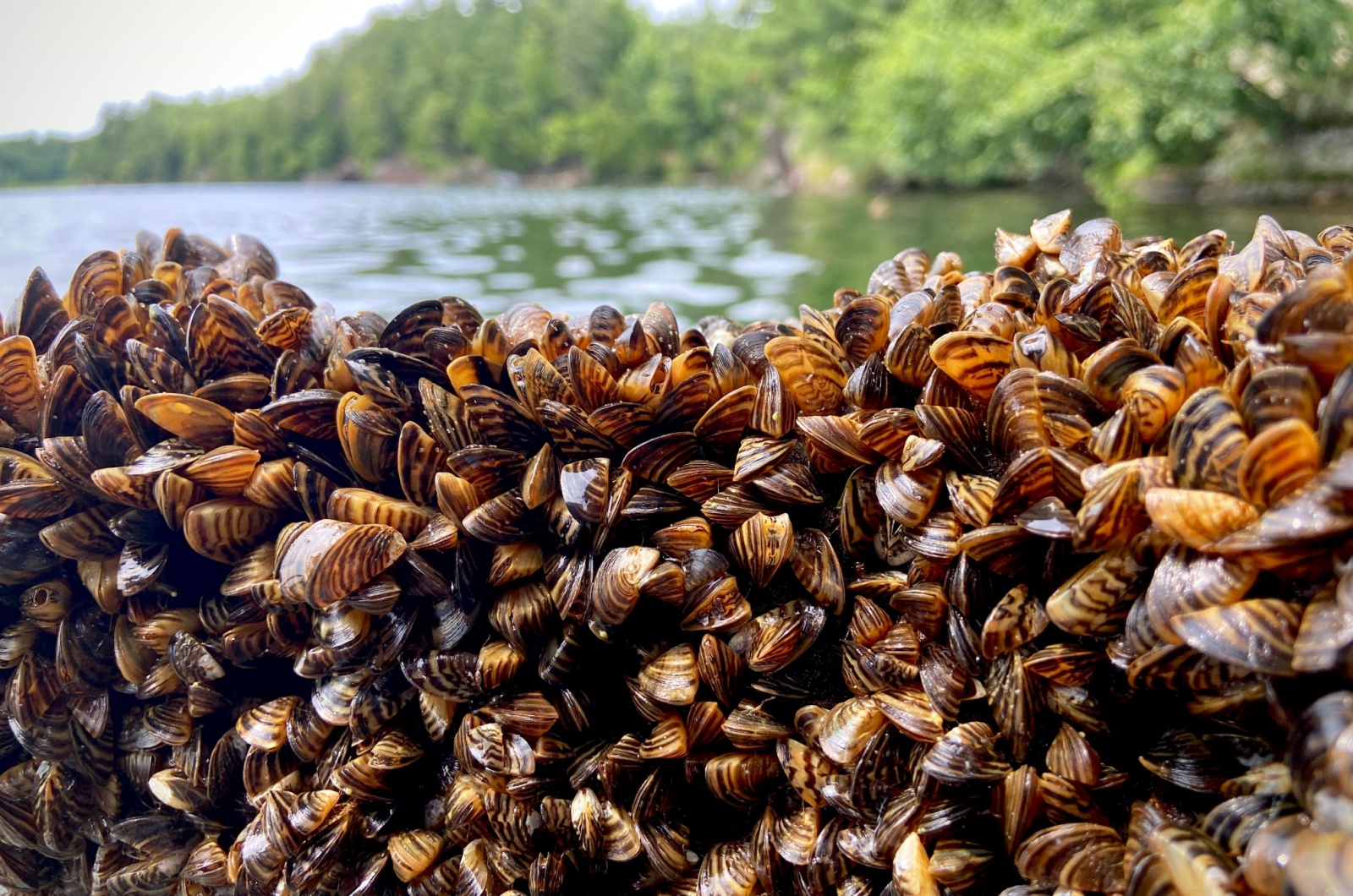
Credit: Shutterstock
The Zebra Mussel is one of the most destructive invasive species in the Mississippi River, wreaking havoc on both natural ecosystems and human infrastructure. Native to Eurasian freshwater systems, it was introduced to North America via ballast water from ships in the 1980s.
These tiny bivalves attach themselves in massive colonies to hard surfaces such as rocks, docks, boat hulls, and even native mussels, suffocating local species and altering the river’s ecosystem.
Zebra Mussels filter-feed, removing plankton and microscopic organisms that serve as food for native fish and invertebrates, leading to declining populations of native species.
Additionally, their rapid reproduction and dense clusters cause major problems for water intake systems, hydroelectric plants, and navigation locks, leading to costly maintenance efforts. Their spread in the Mississippi River is nearly impossible to control, making them one of the most ecologically and economically harmful invaders in North American waterways.
13. Silver Carp
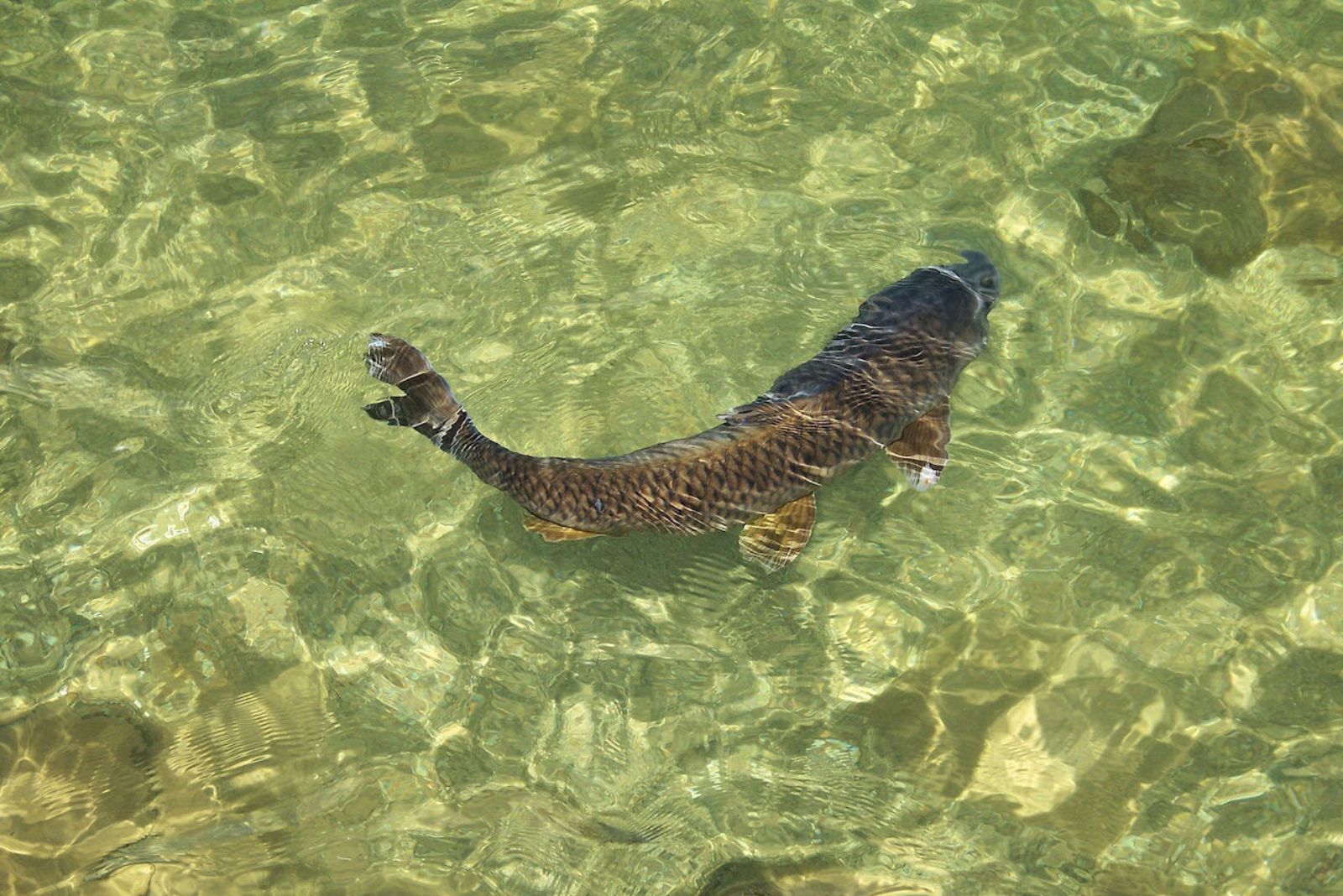
Silver carp are notorious for their impressive jumping skills, often leaping several feet above the water’s surface when disturbed by boats. This unexpected behavior can startle people and poses risks to boaters navigating the Mississippi River.
Introduced as an invasive species, silver carp compete aggressively with native fish for food, disrupting the river’s delicate ecosystem.
Their rapid reproduction and feeding habits make them a significant ecological concern, threatening biodiversity and altering food webs in the river system.
14. Flathead Catfish
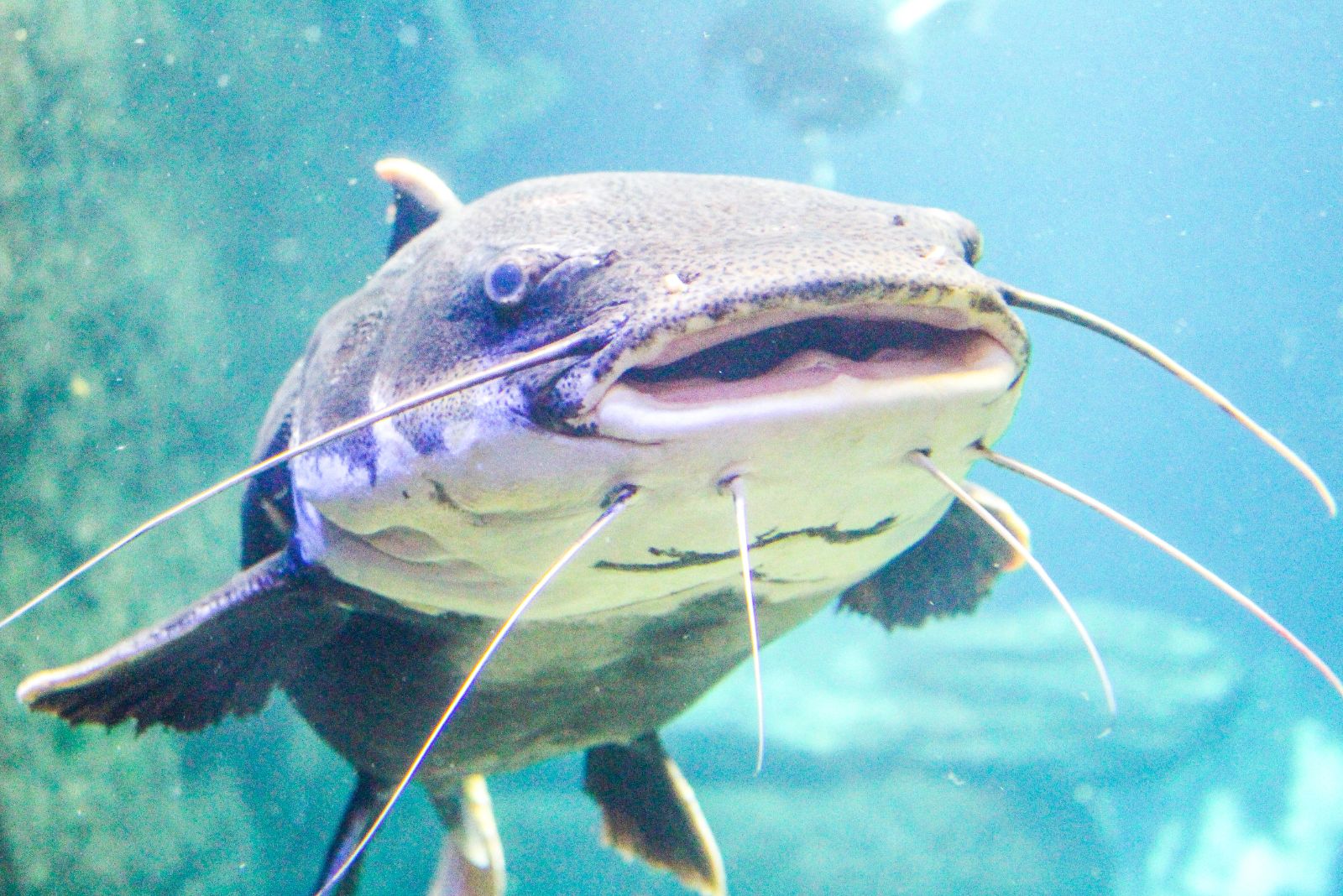
The flathead catfish is a large, powerful predator distinguished by its broad, flat head and long whisker-like barbels that help it sense prey in murky waters.
Preferring deep holes and slow-moving stretches of the Mississippi, this species patiently waits to ambush smaller fish. Its strength and stealth make it a dominant hunter in its habitat.
Despite its elusive nature, the flathead catfish is popular among anglers due to its size and fighting ability, but it also plays a vital role in maintaining the river’s ecological balance.

